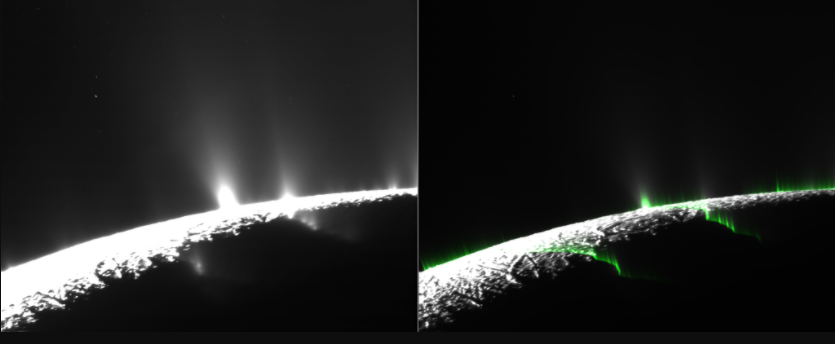
Saturn's moon, Enceladus, was found by Cassini Spacecraft to emit methane-producing processes. Researchers claim it is a sign of life.
An unidentified methane-producing process was found beneath the deep ocean of Saturn's moon Enceladus. The moon has an icy shell, and researchers believe that it might be a sign of life within the planet.
Methane on Saturn's Moon Enceladus
According to Saturn Daily, a new study by scientists from the University of Arizona and Paris Sciences and Lettres University was published in Nature Astronomy. It covered Enceladus' methane production.
Based on the study, substantial water plumes that constantly erupt within Enceladus have been a fascinating phenomena that continue to entice scientists and the public. It has inspired researches and speculations revolving around the vast ocean, which is believed to be located in the middle of the moon's icy shell and a rocky core.
How the Cassini Spacecraft Found Methane on Saturn's Moon
The Cassini Spacecraft was busy minding its business - flying over the moon's plumes and sampling different chemical makeup. But as the spacecraft continued to work on its task, it suddenly detected a high concentration of molecules often associated with hydrothermal vents located at the bottom of Earth's oceans.
Cassini Spacecraft found carbon dioxide, dihydrogen, and methane. It is also reported that the amount of methane that the spacecraft discovered in Enceladus was relatively unexpected.
How Scientists Explain the Methane in Saturn's Moon Enceladus
According to Regis Ferriere, a professor at the University of Arizona, they wanted to know if Earthlike microbes that could eat dihydrogen and produce methane give a meaningful explanation to the surprisingly massive level of methane in Enceladus.
He added that looking for such microbes, also known as methanogens, at Enceladus' seafloor will need challenging deep-dive missions that are simply impossible for the next few decades.
With this in mind, Ferriere's team decided to use an easier route. They developed sophisticated mathematical models that could calculate the probability that various processes might explain the data that Cassini Spacecraft found.
The researchers utilized new mathematical models to combine microbial ecology and geochemistry to analyze Cassini's plume data. It is also used to model the potential processes that could perfectly describe the observations.
What Does the Cassini Data Mean?
According to the study's researchers, Saturn Daily confirmed that Cassini's data are incredibly consistent with microbial hydrothermal vent activity or other processes that do not involve living things.
However, it is quite different from the phenomena that occur here on Earth.
The methane in Saturn's moon Enceladus may have come from a chemical breakdown within the primordial organic matter in the moon's core. It could have been turned into carbon dioxide, dihydrogen, and methane through a hydrothermal process.
It is a highly plausible hypothesis, especially once Enceladus has been proven to have formed through an accretion of a specific organic-rich material that comets supplied.
Related Article : Venus Shows Cracked Surfaces; Researchers Use Radar Data to Suggest That It Is Active
This article is owned by Tech Times
Written by Fran Sanders
ⓒ 2025 TECHTIMES.com All rights reserved. Do not reproduce without permission.




